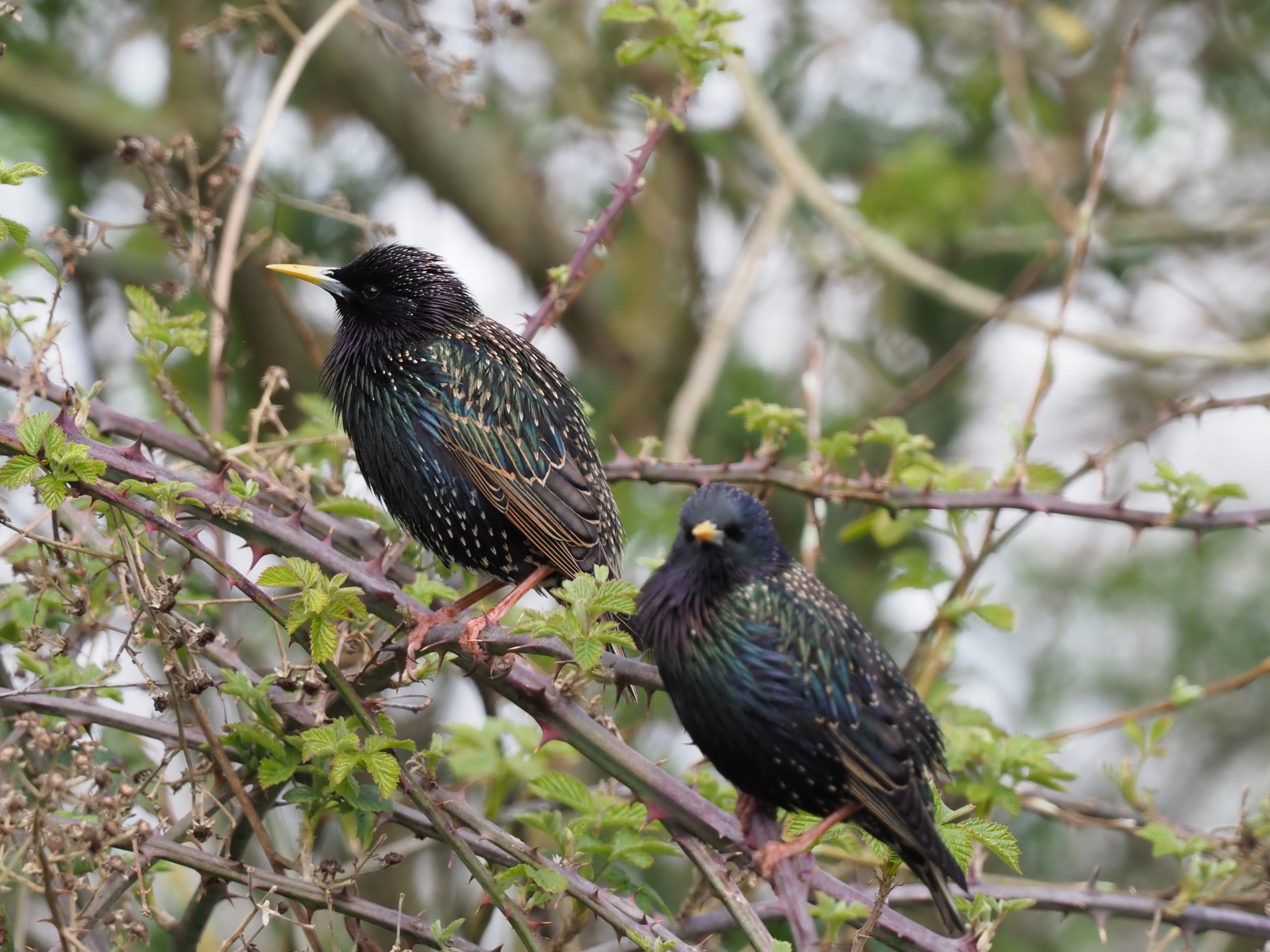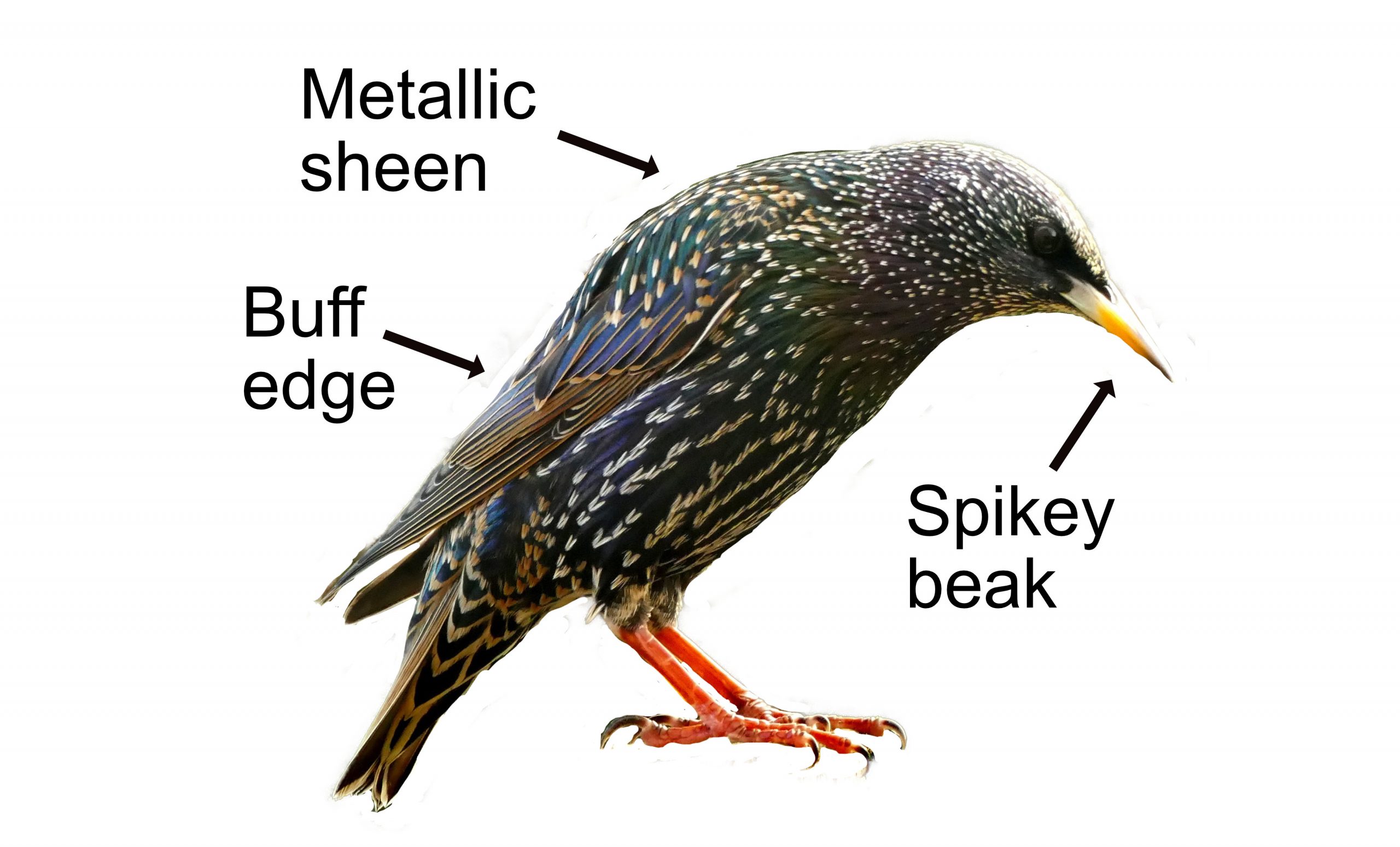
A lovely star covered bird, feisty and characterful, that is typically dark with a purple-green glossy metallic sheen. This colour is derived from the structure of the feathers, not from any pigment - which is rather cool. The Starling is short-tailed with a spikey beak. The wing feathers have a buff edge and their legs are orange-brown. The Starling's beak is colour coded at the base so you can tell the sexes apart - blue for boy and pink for girl. I wonder if that is where human baby colour coding came from? The wings look almost triangular in flight, and the tail is square ended.

Starlings have a variety of calls. One that sounds like a child's spinning top - a buzzing "churr". Another is a strident "Coo-ee!" whistle that sounds like a call from the Australian outback. Best of all, they are brilliant mimics. Their favourites are electronic sounds like car alarms and mobile phone ring tones which are delivered from the perfect singing perch, a TV aerial. These boys are the TV impersonators of the bird world.
The Starling moults after May with their fresh autumn plumage being spotted, almost star spangled. The head goes a little lighter with a vague dark eye stripe. In the autumn, they gather in large roosts, joined by birds from the continent to put-on the greatest show on earth - the murmuration. This where hundreds of Starlings fly in great pulsing flocks. They also forage in flocks and love a good church tower for the chattering troop to roost in. Their spots wear away during the course of winter with all the TV shows and murmuration appearances.
Starlings are really adaptable omnivores, who will eat just about anything. They probe the ground for worms, snails, cranefly larvae (leatherjackets), and hawk other insects (catch while flying), especially flying ants. They will eat fruit and seeds.
The male builds a scruffy nest of leaves and grasses in a building niche or tree which the female tidies up before laying her pale blue eggs (men, honestly!) Starlings lay up to 6 eggs which both parents look after. The young hatch after 12 days and youngsters stay in the nest for 21 days. They then join the troop to form summer flocks. Starlings usually have two broods. The parents may swap partners between broods, depending on who is looking the best in their shiny lycra.
The Starling is a local common resident with 2 million pairs in the British Isles. There are even more in winter when European Starlings come over to join in all the murmuration fun. Some winter roosts have contained over 1 million birds. That must have been an amazing show! Sadly, there has been a rapid decline in numbers of over 50% between 1970 and 2000. Nobody is quite sure why, but it is likely due to changes in farming (if all else fails blame the farmers). The Latin name for the Common Starling is ’sturnus vulgaris’ where ’sturnus’ means 'starling' and ’vulgaris’ means 'common' (or vulgar).